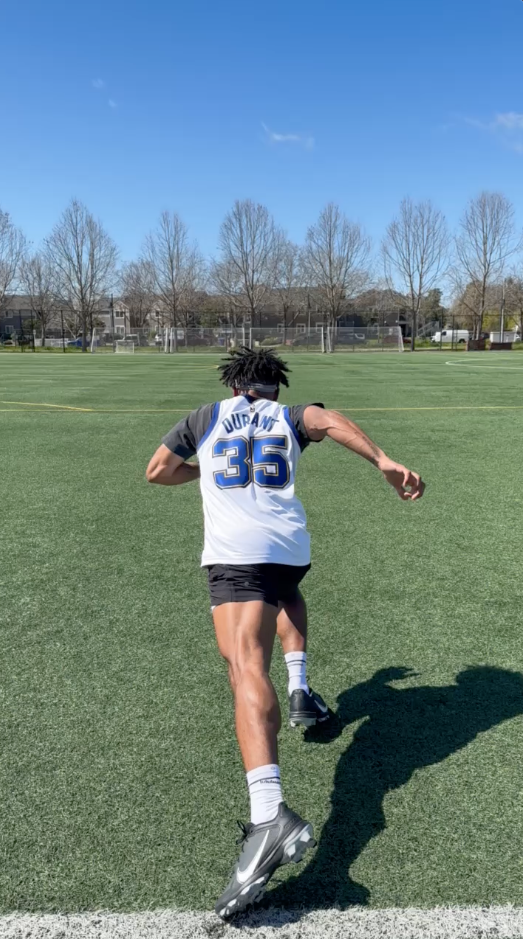Creating Lasting Adaptations in Movement and Skill (Part 3, Endurance, Strength, & Power)
If you’re here, you already read parts one and two, knowing why this five-tiered framework matters so much and why we start with awareness and access . If you’re confused as to why I’m just starting with “Endurance,” read parts one and two.
Endurance
Once you have your new movement on your mind’s map—awareness and access—you need to make it tolerant of stress.
The movement is the key here. I say this because our industry focuses way, way too much on “Is the right muscle working?” First, get the movement accurate. Then we can talk about which muscles to use and how to isolate them.
Whatever movement you’re training, you haven’t used these muscles this way in far too long, so we can make a reasonable assumption: you don’t have the ability to sustain energy there. You (likely) lack mitochondrial density in the muscles that create these positions. You need that density of energy factories if you’re going to own this movement when it matters: under fatigue and pressure.
To train up this density, your work must be accurate, and for about 3-5 sets of 12-100 reps a couple of times a week. Keep the rest between 30 and 90 seconds. I know, it’s a big range of reps. Basically, you’re doing a handful of sets for a buttload of reps. Make the exercise easier if you must, but keep your accuracy.
It will take twelve weeks for your mitochondria to start changing. So I recommend you keep some of this training in your program for a year. How’d I jump from twelve to fifty-two? A dozen weeks gets you a smidgen more density, and that won’t be enough to take you where you want to go unless it's to the refrigerator.
Strength
You must show your brain that these new positions can sustain large forces. Why? Because that little cranial jelly bean is a prediction-making organ, and so you must prove that these positions are reliable under load for them to be chosen in the future. Whether you need them for health or a sports technique, they need to be predictable under duress.
If you can keep your accuracy, do strength and endurance concurrently; I often alternate between the two from workout to workout.
Your new movement doesn’t need to be perfect, but it can’t be forgotten under load. Isometrics are a great entry point because they are so simple. Load it up, heavyish, and just stay there for five to eight seconds.
Strength training allows for the slow recruitment of many motor units, whereas fast movements require a large number of them simultaneously. Start with the slow recruitment of many before you need them all at once.
Your nervous system needs to have a history of recruiting copious motor units (MUs) to succeed in competitive moments. These moments don’t look like Arnold’s Iron Tai Chi. They look like evading the last defender with a jump cut on your right leg, a leg that must sustain eight to fifteen times your body’s weight, if only for nanoseconds.
There’s no way you’re lifting a bar with anything close to those forces, which is why you need to be precise with your plyometric program.
Power
Fast movements are exponentially more forceful—a simple jog (soft j) is three to five times your body’s weight. When your brain knows those kinds of demands are coming up, it’s going to do whatever has gotten the job done in the past. So you need to structure your program in such a way that the new movement is on the menu from which your brain can choose.
You need two things: first, choose to move differently. Far too often, people blindly hope that “corrective exercises” will just magically change how someone moves in sport, as if a million monster-walks magically keep knees wider when three people are trying to tackle you. Instead, use the upstairs organ to create an intention and follow it.
Secondly, you must scale your plyometric program based on the demands of each movement. So if we’re talking about a lower body program…
Walking is approximately 1.50 times your body weight (BW) with every stride.
Jogging is 3-5 times.
Jumping is anywhere from 8-15.
Far too often, coaches ask athletes to go from 1xBW to 8xBW with no on-ramp and all the expectations. So, scale your plyometric program in approximate units of body weight. You progress or regress based on the athlete’s ability to keep the technique. You’ll need to be creative to bridge between the demands. Your tools are weight and speed. You remove or add weight or ask the athlete to speed up or slow down.
WATCH THIS VIDEO PROGRESSION TO SEE WHAT I MEAN
Next Steps
So now you own the movement under duress and at speed. I wish I could tell you it’s just magically going to show up in practice since that’s the assumption so many people mistakenly make. You need to be deliberate, integrating this new movement into complex scenarios. That’s what you’ll learn in the next blog post.


